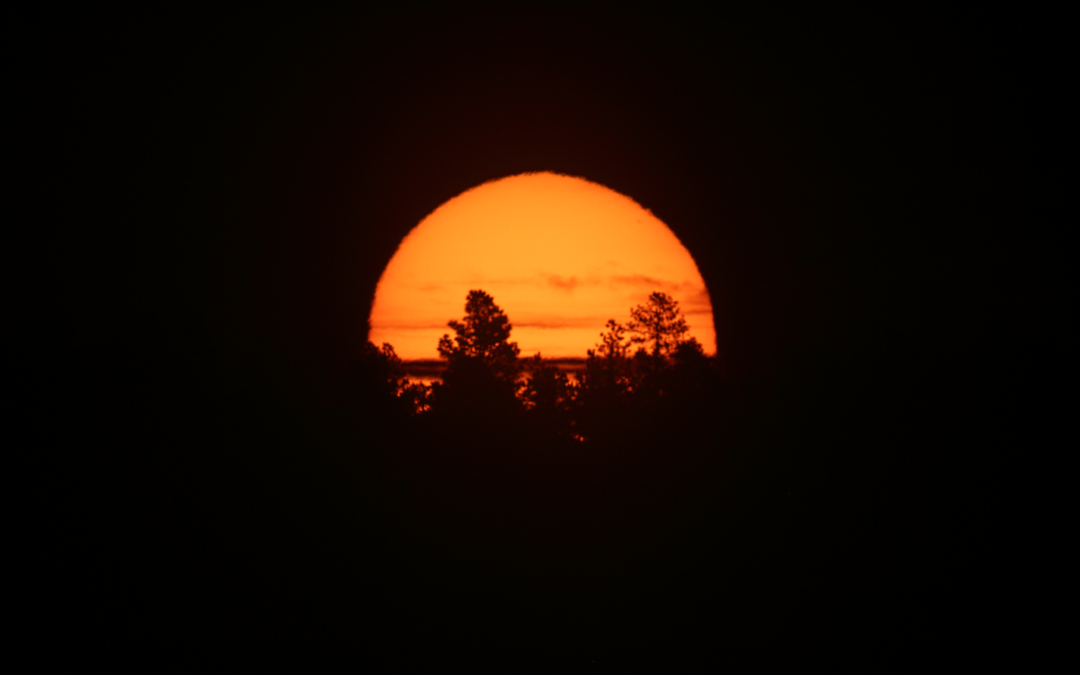Observing the sun through a telescope has blinded a lot of people and melted a lot of optics, and therefore requires a filter to eliminate 99.999%—that’s the real proportion; not hyperbole—of incoming light. So just before dawn I cover my scope’s aperture with solar film, point it barely below the horizon directly toward the yet-invisible soon-to-rise sun, and start tracking our star’s climb behind the dark landscape. Historical observation, science’s predictions, and a glow radiating where the ecliptic meets the ridge to my east all testify it will rise soon. So I watch and wait.
Malachi, Yahweh’s messenger, describes the sun’s eventual rise as a sign that our yearning for eternity, for all to be made right, will finally come: “But for you who fear my name, the sun of righteousness shall rise with healing in its wings. You shall go out leaping like calves from the stall.”
As the sun rises, the low clouds and mountain pines draw my attention from the distant light silhouetting them. But they are not obscuring and littering the view; they themselves are hallowed by the light behind them.
In a list of evidences that God is faithful, despite the darkness the psalmist sees in the world, he mentions this one: “Yours is the day, yours also the night; you have established the heavenly lights and the sun.”
Sunrises declare an enveloping of night in day, darkness in light—resurrection’s eternal promise. Each sunrise declares that in this day mercies have been renewed. The sun that entices me to yearn for the end of all darkness equally invites me to wash away the previous days’ darkness in dawn’s shower.
This week, may we find as much worth and hope in each day’s challenge as truth and fulfillment in eternity’s promise.

